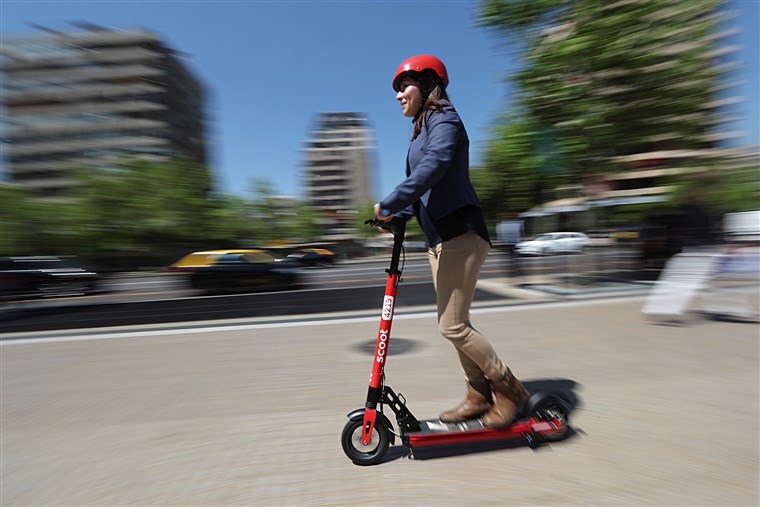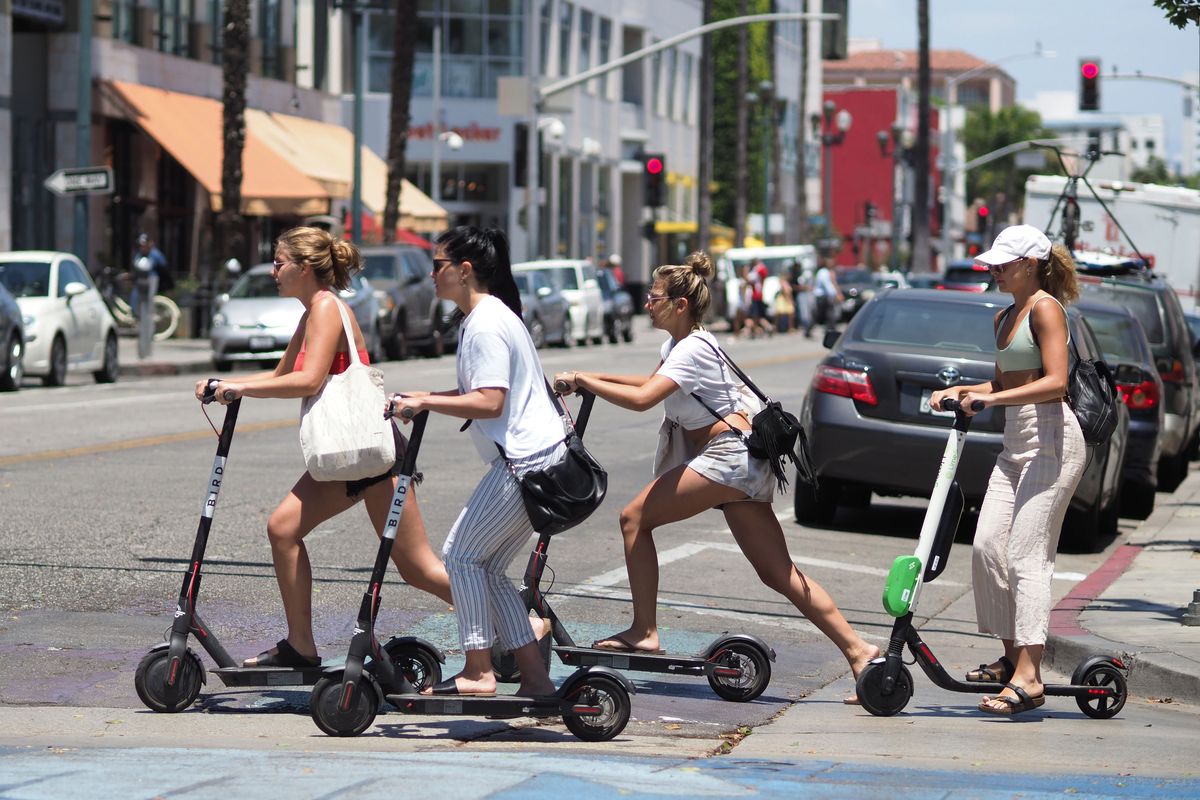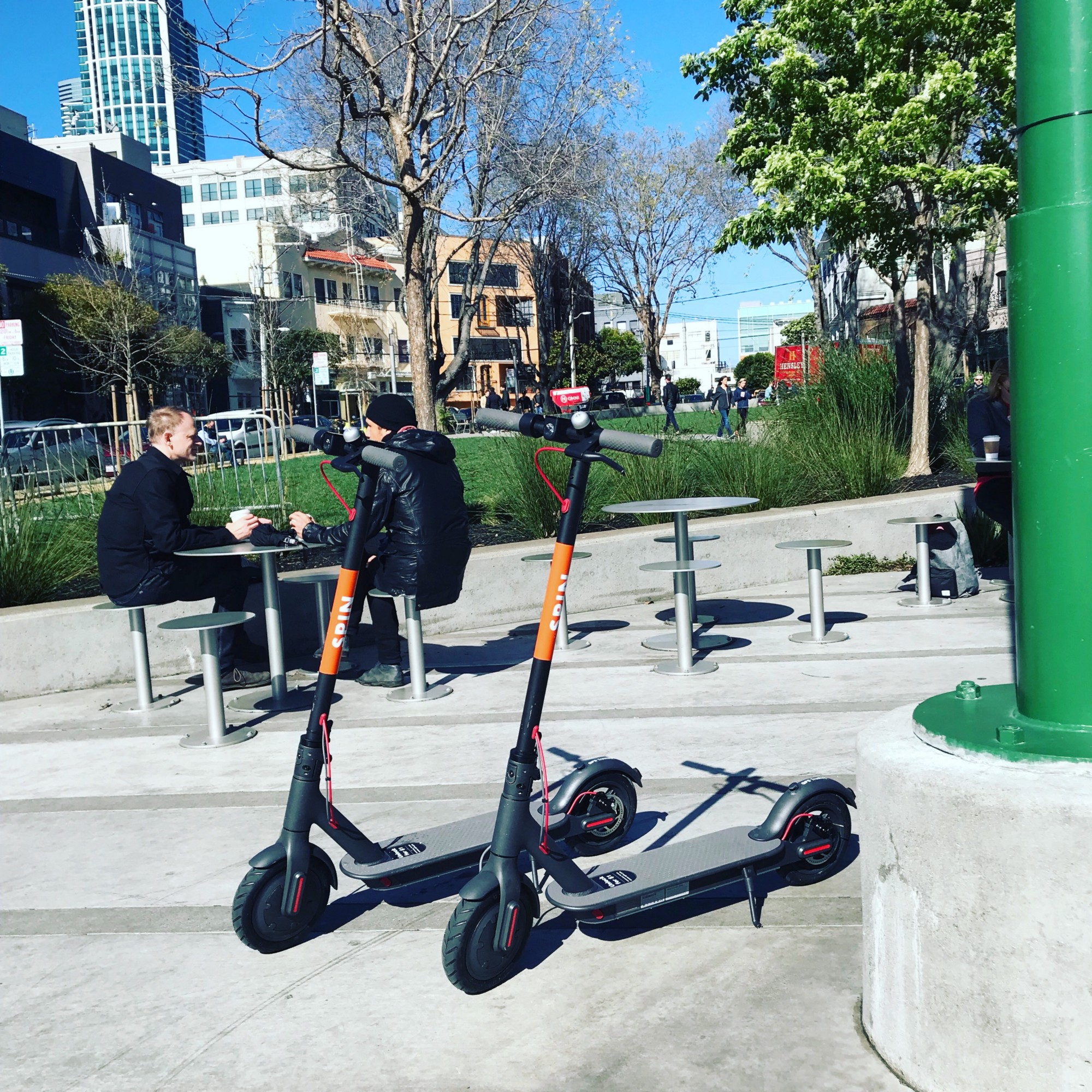Electric scooters are taking over American
Love them or hate them, electric scooters are everywhere–zipping along city streets and littered on sidewalks, to the dismay of pedestrians and drivers who must share the road.
And now they have overtaken station-based bicycles as the most popular form of shared transportation outside transit and cars in the U.S.
According to a new report released Wednesday by the National Association of City Transportation Officials, riders took 38.5 million trips on shared electric scooters in 2019, eclipsing the 36.5 million trips on shared, docked bicycles.

Riders also took trips on 3 million dockless pedal bikes, which can be picked up and dropped off anywhere, and 6.5 million dock less electric bikes in 2019, but the report notes those numbers are declining.
One reason for electric scooters’ fast growth: companies are jockeying for strategic position in the so-called micromobility revolution, where consumers are embracing shared scooters and bikes for short trips and exploring alternatives to car ownership buoyed by the ubiquity of smartphones.
Riders took 84 million trips on micromobility services in 2019, more than double the number from the year before, according to the report. Electric scooters helped drive that trend, with more than 85,000 of them available for public use in the U.S. compared with 57,000 station-based bikes.
To be sure, scooter companies face challenges from every direction, including vandalism, theft, rider injuries, intense competition and aggressive regulations in cities across the country.
Yet the industry persists and venture capitalists, ride-hailing companies and traditional auto manufacturers have poured millions of dollars into the fledgling business.
The original bike-share systems in the U.S. developed after cities invited them in, said Kate Fillin-Yeh, director of strategy for the National Association for City Transportation Officials.
“In the last year-and-a-half, it’ s a very different animal,” she said. “The companies are in some cases trying to beat each other to the market.”
Car manufacturers and ride-hailing companies are taking notice, and some have made their own plays in the space with larger ambitions than scooters alone.
Uber bought Jump Bikes, an electric bike and scooter company that operates in about two dozen cities, and last year it invested $30 million in Lime, which is in more than 100 cities worldwide.
Ford, which bought scooter company Spin in November, said deploying electric scooters will help the company eventually roll out autonomous vehicles by building critical relationships with U.S. cities as they work together to craft regulations and build out infrastructure.

If it seems like electric scooters popped up overnight, that’s because they did. Several companies distributed them throughout cities without permission or permits, reminding local officials of when ride-hailing companies such as Uber launched in their markets years ago without warning.
But cities learned from that experience and have been more aggressive about regulating scooters. San Francisco, for instance, kicked out Bird, Lime and Spin and instituted a competition for permits, ultimately awarding them to relative underdogs Scoot and Skip and capping the number of scooters they could deploy. New York City does not allow shared electric scooters, although legislation has been introduced to change the rule.
As a condition for operating there, many cities are requiring scooter companies to share their troves of location data, which show where the scooters are and the routes they take. That can be valuable to plan bike routes and docking stations or to understand traffic patterns.
It also raises questions about user privacy. The location data provided to cities is not linked to names, emails or other directly identifiable information, but “if you take enough GPS data points and begin attaching other data sets, it can be used to identify specific individuals,” said Regina Clewlow, CEO of Populus, a company that helps cities securely access data for policy and planning while protecting privacy.

“If your head hits concrete at 20 miles an hour, you are not going to get up,” said Christopher Ziebell, emergency room medical director at Dell Seton Medical Center in Austin. “These have little tiny wheels on them, so it doesn’t take much for a rider to go flying off.”
Some industry watchers wonder how long the electric scooter phenomenon will last. Veteran auto analyst Maryann Keller calls the billion-dollar valuations that have been reported for some scooter companies nonsensical. Scooters are a capital-intensive business, and there are few ways to differentiate from competitors’ models, making it hard for companies to stand out, she said.
“These little fads come and go,” Keller said.
For those wishing for the scooter fad to go, they might have to wait a little longer.
 hotebike
hotebike